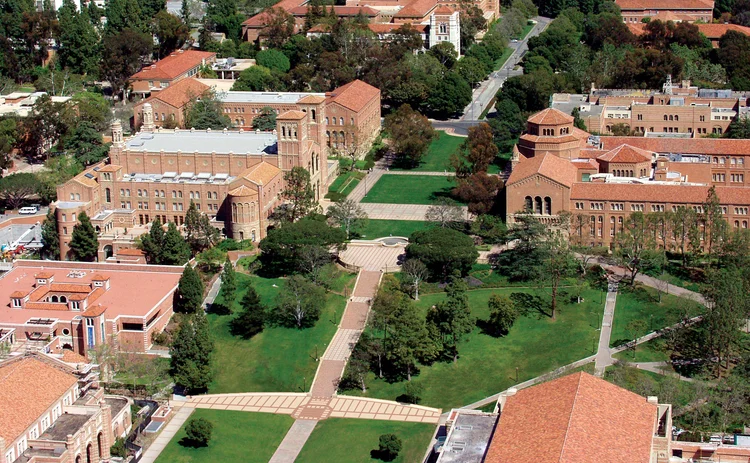
Quant Guide 2019: University of California, Los Angeles
Anderson School of Management, Los Angeles, US

Master of Financial Engineering | metrics table at end of article
When Mikhail Chernov took over as the academic director of UCLA’s financial engineering programme in July 2015, he immediately started firing people.
“I replaced the adjuncts with regular faculty,” he says matter-of-factly. “And that streamlines the curriculum. If adjunct faculty are teaching core classes, it’s very hard to co-ordinate the material. Now, when a professor comes in the spring quarter, they know exactly what was covered in the winter quarter.”
UCLA’s master of financial engineering runs for 15 months. Before applicants even set foot on campus, they complete up to 60 hours of introductory material. The programme itself consists of 10 core classes and four electives, all of which are offered from inside the department. Students don’t often take additional courses outside of the seven optional modules on offer.
“Theoretically, they can take other classes. But their plate is full. You’d have to be a super hero. They’re busy all day long,” says Chernov.
The degree course, first established in 2009, is “front-loaded”, as Chernov describes. Initial workloads are deliberately intensive so that students are prepared for interviews for the summer internships.
“You interview in the late fall for summer internships,” says Chernov. “And students have just arrived on campus and just started getting used to things. Now, they dive into the more serious material right away. The classes are still of an introductory nature, but it’s a step up in terms of what they learn.”
As well as course material and an internship, the programme includes a seven-month “applied finance” research project, which starts immediately before the summer break. Students undertake the project in teams of four, and each team is attached to a financial company.
According to Chernov, some companies assign UCLA teams on a rolling basis to long-term, ongoing problems. “That’s what we’re doing with Citibank, for example,” he says. “It gets going with one team and the next year it’ll be another. Our students get to see what real quant programmes these institutions are dealing with. They get an academic perspective on the problem as well as the real-life perspective.”
For Chernov, who arrived in Los Angeles in 2013 after a stint at LSE, striking an appropriate balance between academic theory and the real-life application of complex techniques is a priority. In the early years of the programme, risk management classes would focus on historical hedging failures, such as the losses suffered by German conglomerate Metallgesellschaft, or the derivatives-related bankruptcy of Orange County – work that Chernov describes as “boring cases from 20 years ago”.
The programme aims to prepare students for a financial industry within which the employment of neural networks, natural language processing and unstructured data scraping technology is as common or rote as performing basic value-at-risk calculations.
“Our programme is nimble and we’ve been able to adapt quickly,” says Elisa Dunn, executive director of the master’s course. “We have an advisory board comprising industry professionals from consulting, investment banks, insurance and asset management and we get together several times a year to get a sense of the shifts they’re seeing in their industries.”
Despite tech companies, as Chernov puts it, “gobbling up a lot of graduates”, Anderson students remain interested in traditional employment avenues in finance.
“There’s basically unlimited demand on the risk management side and on the asset management side,” he explains. “So we have a dedicated course on asset management, on risk management, as well as the ‘big data’, data analytics and machine learning classes. We’re preparing students for what the industry needs.”
Technologies that are at the fringes of finance will increasingly move into the central ground. Blockchain, for example, will standardise and streamline instruments such as mortgage-backed securities and complex derivatives, Chernov believes.
But automation will not put today’s grads out of a job. “I think robots will probably replace low-level jobs, but you always need high-functioning humans to push things forward.”
Only users who have a paid subscription or are part of a corporate subscription are able to print or copy content.
To access these options, along with all other subscription benefits, please contact info@risk.net or view our subscription options here: http://subscriptions.risk.net/subscribe
You are currently unable to print this content. Please contact info@risk.net to find out more.
You are currently unable to copy this content. Please contact info@risk.net to find out more.
Copyright Infopro Digital Limited. All rights reserved.
You may share this content using our article tools. Printing this content is for the sole use of the Authorised User (named subscriber), as outlined in our terms and conditions - https://www.infopro-insight.com/terms-conditions/insight-subscriptions/
If you would like to purchase additional rights please email info@risk.net
Copyright Infopro Digital Limited. All rights reserved.
You may share this content using our article tools. Copying this content is for the sole use of the Authorised User (named subscriber), as outlined in our terms and conditions - https://www.infopro-insight.com/terms-conditions/insight-subscriptions/
If you would like to purchase additional rights please email info@risk.net
More on Quantitative finance
Quant Finance Master’s Guide 2023
Risk.net’s guide to the world’s leading quant master’s programmes, with the top 25 schools ranked
Baruch topples Princeton in Risk.net’s quant master’s rankings
US schools cement top five dominance as graduate salaries soar
Is it worth doing a quant master’s degree?
UBS’s Gordon Lee – veteran quant and grad student supervisor – asks the hard question
Starting salaries jump for top quant grads
Quant Guide 2022: Goldman’s move to pay postgrads more is pushing up incomes, says programme director
Quant Finance Master’s Guide 2022
Risk.net’s guide to the world’s leading quant master’s programmes, with the top 25 schools ranked
Princeton, Baruch and Berkeley top for quant master’s degrees
Eight of 10 leading schools for quantitative finance programmes are based in US, latest rankings show
Quant grad conveyor belt stalls as banks retrench
Jobs market is long quant graduates, short vacancies – but hiring freeze shows signs of thawing
Quant Finance Master’s Guide 2021
Risk.net’s guide to the world’s leading quant master’s programmes, with the top 25 schools ranked







